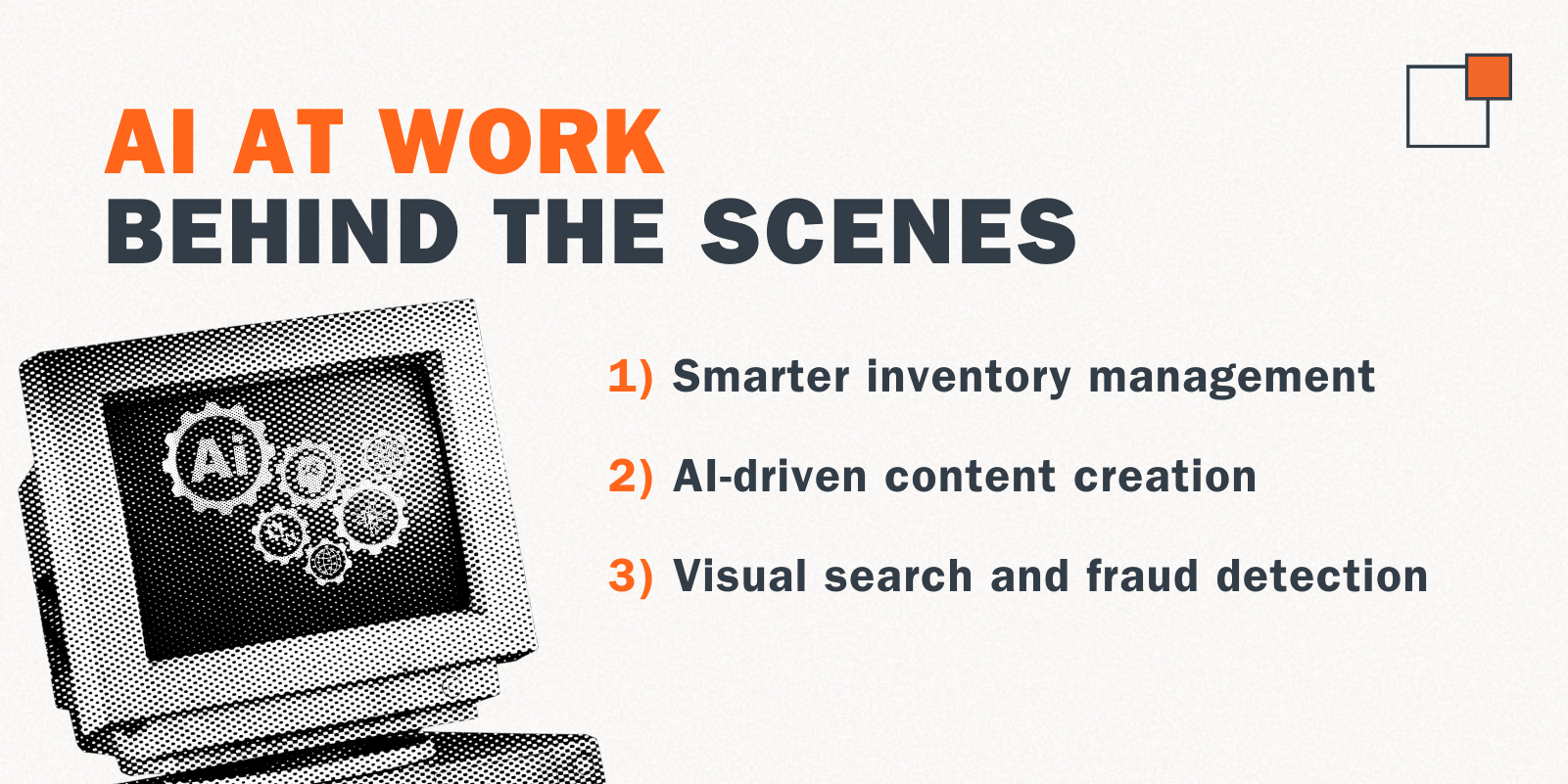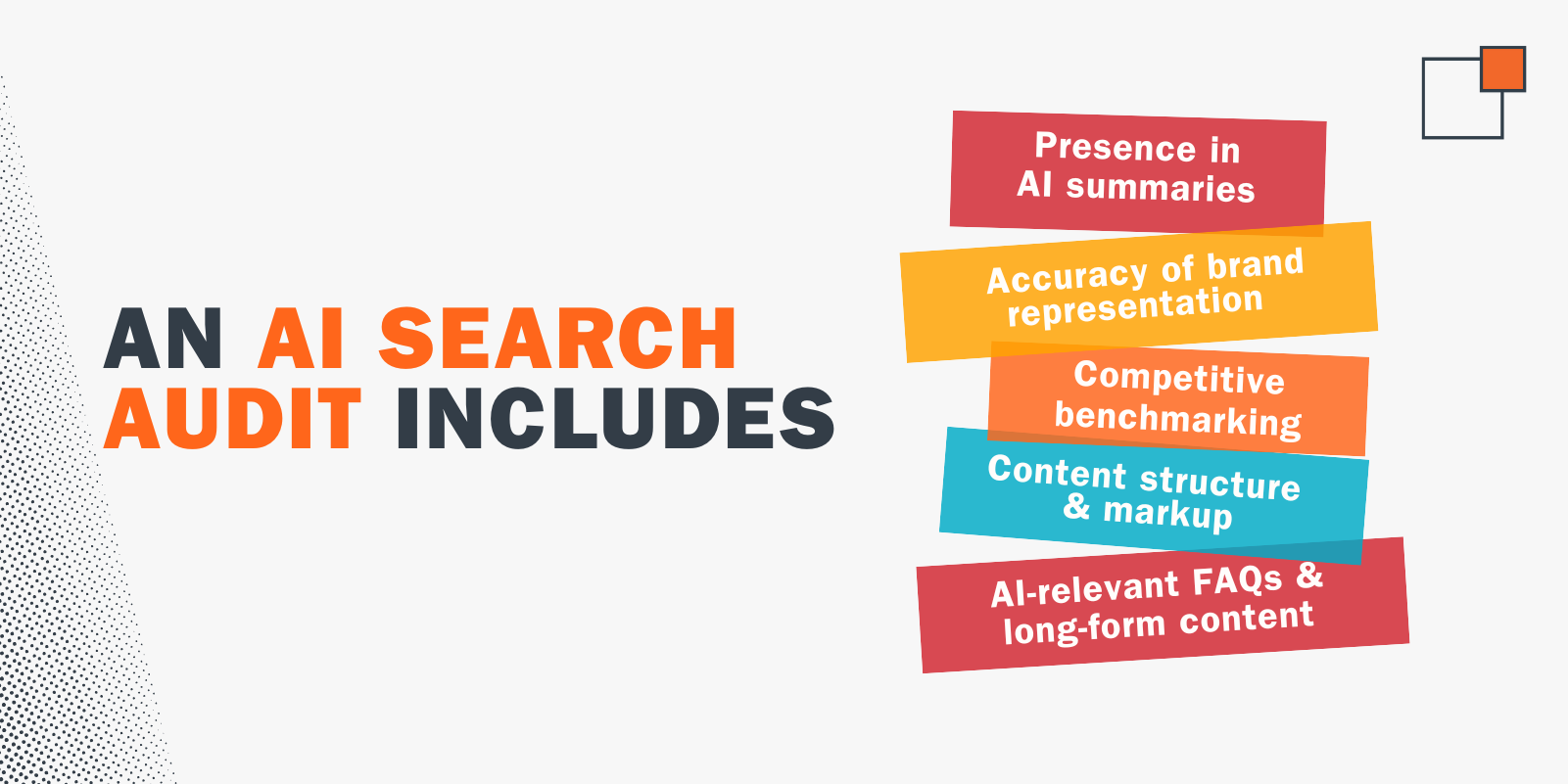The E-Commerce Revolution
How AI is Changing the Game
Chat, is the traditional e-commerce playbook dead?
With the rise of artificial intelligence, brands are facing a seismic shift in how they connect with consumers. Much like how AI is evolving SEO from a keyword-focused game to a strategy centered on user intent, the e-commerce landscape is moving beyond simple transactions to a world of personalized, predictive and seamless experiences.
The old tactics of broad segmentation and one-size-fits-all marketing are no longer enough; the future of online retail belongs to brands harnessing AI to create a shopping journey so intuitive it feels like marketing magic. Here’s how this technology is changing the e-commerce landscape as you know it:
Change #1: Hyper-personalized targeting
In the past, e-commerce marketers relied on broad customer segments and rule-based product recommendations. A customer who bought a pair of jeans, for example, might be shown a belt but this lacked the depth to truly understand individual preferences and predict future desires.

Today, AI-powered systems are rewriting the script. Machine learning algorithms can analyze a customer's entire digital footprint, including their browsing history, past purchases, search queries and real-time on-site behavior, to create a dynamic, ever-evolving profile. This allows brands to move beyond simple suggestions and deliver a truly hyper-personalized experience through a range of features:
-
Dynamic product recommendations: Instead of showing what's popular across the board, AI can curate a "For You" page on a user’s homepage that feels entirely unique to them, recommending products based on their style preferences, brand loyalties and even the products they've viewed but not yet purchased.
-
Personalized content and layouts: Imagine a website changing its appearance for every visitor. AI can dynamically alter hero images, adjust ad copy and even rearrange product categories to align with a user’s perceived interests… all in real time.
-
Data-driven customer segmentation: AI can dynamically update audience segments, ensuring that marketing messages and ad campaigns are always relevant and highly effective.
Change #2: Evolved customer service
A customer with a question about a product, size or return policy who finds your support team is offline represents a missed opportunity and a potential lost sale. However, with AI-powered chatbots and virtual assistants now available 24/7, brands can provide instant, accurate answers and a new level of customer convenience.
These smart chatbots, powered by Natural Language Processing (NLP), are not the clunky, menu-driven bots of the past. They can understand complex, conversational queries, providing human-like responses to everything from order tracking to product feature questions. This frees up human support agents to focus on more complex, high-value issues requiring a personal touch, resulting in a more efficient support system and a better overall customer experience.
Change #3: Smarter operations
AI's impact isn’t just limited to customer-facing applications; it's also a powerful tool for optimizing the backend of your business, leading to increased efficiency and a better bottom line.

-
Smarter inventory management: E-commerce is a game of supply and demand and getting it wrong can be costly. AI can analyze historical sales trends, seasonal data, market buzz and even external factors like social media trends to predict future demand. This allows brands to optimize inventory levels, preventing frustrating stockouts on popular items while reducing overstock on slow movers, which in turn cuts warehousing costs.
-
AI-driven content creation: AI has automated the creation of essential marketing and product content. Tools can now generate high-quality product descriptions and compelling images to go with them, streamlining a time-consuming part of the e-commerce process.
-
Visual search and fraud detection: AI-powered visual search tools solve the problem of customers not knowing the right words to describe what they're looking for. By allowing users to upload a photo of a product they like, these tools can find similar items on your site, which is a game-changer for categories like fashion, home decor and accessories where visual inspiration is key. Plus, AI's ability to analyze large data sets can help detect and prevent fraudulent transactions, protecting both the business and its customers.
Change #4: New discovery experiences
Search is no longer the only entry point to shopping. AI is driving new forms of product discovery through conversational interfaces, recommendation engines and generative shopping assistants. Instead of typing in keywords and scrolling through endless product grids, users can now ask AI tools things like “What’s a good waterproof jacket for hiking in fall under $100?” and get curated product suggestions in seconds.
This shift means brands need to think in terms of queries and context, not just product pages. It’s not enough to rank for keywords—you need to be discoverable in the dialogue AI tools are having with your customers.
Change #5: Reshaped product pages
We’re entering an era where product visuals, demos and even models are AI-generated, saving brands time and money while unlocking a new level of customization.
-
AI-generated lifestyle images can show products in different settings or use cases without full-scale photo shoots.
-
Virtual try-ons powered by AI are becoming more sophisticated, especially in fashion, eyewear and beauty.
- Voice and video assistants are emerging to guide users through products, FAQs and tutorials in a more interactive way than static pages ever could.

This evolution is pushing brands to rethink the product page as something interactive and visual, not just a static piece of web real estate.
Change #6: Post-purchase engagement
The customer journey does not end at checkout. In fact, this stage has become an important opportunity for brands to build lasting relationships and foster loyalty. AI is transforming post-purchase engagement by enabling brands to deliver highly personalized and timely communications that keep customers connected and satisfied.
AI can power several key post-purchase experiences, such as:
-
Real-time delivery updates: AI analyzes order data, shipping conditions and external factors to provide proactive notifications about delays or changes before customers even ask.
-
Personalized review requests: Based on purchase behavior, AI can send targeted, relevant prompts for feedback that feels valuable rather than generic.
-
Tailored content delivery: Brands can use AI to send product care tips, usage guides or recommendations for complementary products at the most relevant time in the customer’s ownership cycle.
By leveraging AI in these ways, brands go beyond retention to actively delight customers long after the sale. This creates positive experiences that increase repeat purchases, boost word-of-mouth referrals and strengthen brand advocacy.
What e-commerce brands should be doing with AI right now
AI is quickly becoming an essential part of modern e-commerce, but the real opportunity lies in how it enhances the capabilities of the teams behind the brand. For our clients, it's about creating smarter workflows, freeing up creative energy and making better decisions faster. As a full-service marketing agency, we focus on integrating AI in ways that amplify human strengths, not replace them.
Here’s what we recommend every e-commerce brand start doing today:
1. Teach AI your brand’s voice and context
Your customers shouldn’t feel like they’re talking to a machine—they should feel like they’re talking to YOU. Leading brands are doing this by feeding AI tools their own content: things like product specs, help‑articles, reviews, brand messaging and even internal knowledge. When you do this, AI‑powered assistants (from chatbots to site agents) answer in a way that’s consistent, helpful and unmistakably on‑brand.
Take the thunder::tech & ai12z partnership: ai12z crawls our site, ingests our content structure, voice and business logic, then delivers responses that “capture the voice” of the brand. This allows AI to handle routine questions and give us insight into what visitors are really asking. Try it out in the bottom right corner!
thunder::tech helps brands build an AI “brand layer” by sourcing and organizing their content pipeline so AI tools can respond with confidence, using your voice, tone and values—not generic placeholders.
2. Start creating content for AI, not just humans
With AI Overviews increasingly shaping how customers discover products through search, brands need to think beyond traditional SEO and embrace AEO. AI search is no longer on the horizon—it’s here.
If your brand isn’t showing up in AI Overviews, product carousels in generative results or voice assistant answers, you’re not just losing visibility, you’re losing market share. To stay competitive, your brand needs high-quality, structured content AI systems can easily understand, summarize and surface in rich results.
thunder::tech helps brands craft content that’s optimized for both humans and machines—clear, informative and built to perform in an AI-driven search landscape.
3. Conduct an AI search audit
As AI-powered search tools like Google’s Search Generative Experience (SGE) and ChatGPT’s browsing capabilities begin influencing how customers discover products, it's critical for brands to understand how they are represented, or if they’re showing up at all, in AI-generated answers. That’s where an AI search audit comes in.

Here’s what the audit should include:
-
Presence in AI summaries: Are your products, services or brand being mentioned in AI-generated search results? If not, your content might not be structured in a way AI can easily parse or prioritize.
-
Accuracy of brand representation: When AI does mention your brand, is the information correct? Does it align with your current positioning, offerings and tone?
-
Competitive benchmarking: How often are competitors appearing in AI answers compared to you? What types of content are they using to give them an edge?
-
Content structure and markup: Does your website content use schema markup and structured data to make it easily digestible by AI crawlers?
-
AI-relevant FAQs and long-form content: Are you providing the kind of authoritative, evergreen content AI systems use to generate helpful answers?
At thunder::tech, we help brands run AI search audits to identify content gaps, surface opportunities and develop a roadmap for improving visibility in AI-powered discovery tools.
4. Continuously monitor and optimize AI performance
AI tools aren’t set-it-and-forget-it solutions. Brands need to regularly track how AI models perform, from personalization algorithms to chatbots, and make ongoing adjustments based on real user data and feedback. This ensures AI stays aligned with evolving customer needs and business goals.
At thunder::tech, we help brands stay ahead by continuously monitoring their AI systems, analyzing performance data and fine-tuning models to deliver the best possible results. Our team ensures your AI evolves with your customers and business, so you never miss an opportunity.
The human touch still matters
While AI can automate, predict and personalize, it does not remove the need for human oversight. Authenticity and a strong brand voice remain the bedrock of a successful e-commerce business. As with video production, AI is a creative ally, a tool to help you achieve your goals faster and more efficiently. The most successful brands will be those using AI to create a seamless, efficient and deeply personal experience, all while maintaining the unique voice and values that resonate with their audience.
The future of e-commerce is not just about technology; it’s about using said technology to build stronger, more meaningful connections with your customers. Reach out today and let’s elevate your shopping journeys.

About the Author
Abi is the Director of Communications at thunder::tech, where she leads an integrated team specializing in performance marketing, advertising, social media, content and branding. Talk to her about pop culture and her personal grading system for coffee shops.